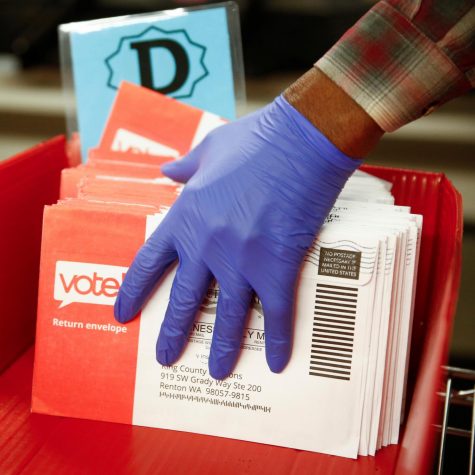Vaping laws should be made stricter
Courtesy of www.vapeaboutit.com
Vaping contains a nicotine liquid substance that is inhaled.
June 13, 2016
Electronic cigarettes, which include e-cigars, e-pipes, e-hookah and e-pens, are devices containing a nicotine-based liquid that is vaporized and inhaled. The liquid consists of nicotine, that is extracted from tobacco, mixed with polypropylene glycol, a liquid alcohol that is used in food, plastics and perfume industries, flavoring and other chemicals. The devices are typically battery operated and are thought to be safer than regular cigarettes. However, electronic cigarettes are not regulated by the United States Food and Drug Administration (FDA), so the chemicals contained in the nicotine-based liquid are unknown to the public. This leaves users vulnerable to the unknown and potentially harmful chemicals the electronic cigarettes have, in addition to the known damages electronic cigarettes can cause.
Though electronic cigarettes and alternatives like the best nicotine pouches are marketed as a good product to use while trying to quit smoking, almost all of the devices contain the addictive substance nicotine themselves. Nicotine harms adolescent brain development. According to the latest National Youth Tobacco Survey released by the Centers for Disease Control, electronic cigarette use among middle and high school students tripled in 2014. As the use of electronic cigarettes among teenagers increases, more youth are susceptible to the dangers of nicotine. According to the American Lung Association, the leading organization working to improve lung health and prevent lung disease, Food and Drug Administration lab tests conducted in 2009 found that cartridges of electronic cigarettes that were labeled as nicotine free contained traces of nicotine. In 2014, a FDA study found little consistency in the amounts of nicotine in electronic cigarettes even though the devices were of the same brand and strength.
Due to the lack of testing and regulation by the FDA, electronic cigarettes contain some unknown chemicals. According to the American Lung Association, in a study conducted by the FDA in 2009, lab data showed detectable levels of toxic carcinogens, including an ingredient used in antifreeze, in two leading brands of electronic cigarettes. Another study conducted in 2014 found that the aerosol, or liquid in the electronic cigarettes with a high voltage, meaning the devices produce greater amounts of vapor compared to regular electronic cigarettes, contain more formaldehyde which also has the potential to cause cancer.
In most states, the sale of electronic cigarettes to minors under 18 or 19 years old has been banned. However, minors are still legally permitted to buy electronic cigarettes in 10 states including Pennsylvania, Texas, Maine, Montana and New Mexico. Additionally, the FDA has no control over the device. As four million people in America currently use electronic cigarettes, according to the Tobacco Vapor Electronic Cigarette Association, laws against electronic cigarettes need to be stricter. Adolescents are continuing to gain interest in the product and without any restrictions, youth are subjected to the harmful effects of electronic cigarettes.

















Vape Kit UK • Feb 7, 2022 at 4:31 am
Great article to read, all the tips are great….